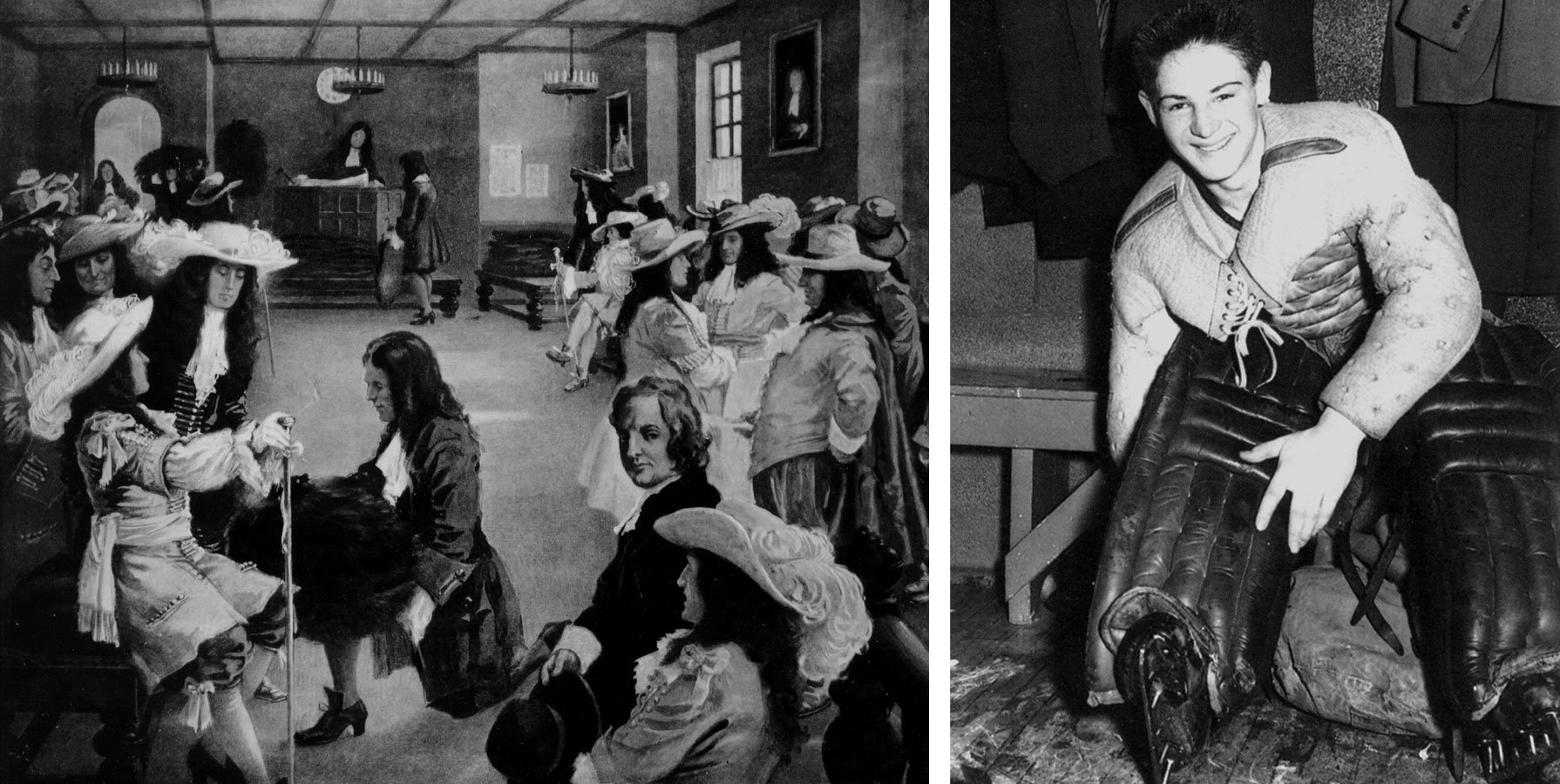Beaver Hats to Hockey Pads: A Social History of Felt in Canada: Introduction
LEFT: The First Public Sale of Furs, 1672. The traders wear beaver hats in the cavalier style popular throughout Europe in the 17th century (Hudson’s Bay Archives, Provincial Archives of Manitoba).
RIGHT: Terry Sawchuck, widely known as one of Canada’s greatest goal-tenders. Here, in 1947, he wears shoulder pads made of felt (The Imperial Oil Turofsky Collection, Hockey Hall of Fame).
Introduction
Beaver Hats to Hockey Pads was originally published as an essay accompanying the exhibition I curated about felt for the Textile Museum of Canada in 1999-2000. This version has been edited and expanded to form a series of twelve posts that is not so much a chronology as it is a collection of stories that uses felt objects from private and public collections to illustrate aspects of Canadian history from the fur trade though popular culture.
Felt drove the early days of trade in Canada through European millinery. Its production expanded with modern manufacturing in the nineteenth century side by side with steel, and peaked during World War II. Felt thrived in the subsequent wave of optimism in North American engineering and design. And, though it struggled through globalization, felt continues to be unrivalled in some industries, remaining contemporary in quality and sustainability.
Felt is an ancient material, but this is a new-world history that traces the material culture of modern manufactured felt in a North American context. The following reads, at once, as a series of cliches of Canadian identity and as a story of strength and survival. KW
Pelts and Felts: A vagary of fashion that brought prosperity to a nation but destitution to many long before Confederation…
Hats: Canadian classics, and how some indigenous folks stick it to the man…
Wilderness Tips: Felt filters, lines and insulates…
Boots: A Cold War, in which felt meets rubber…
A Story of Immigration: To the Prairies where felt is good for the sole…
First Nations: A museum artifact tells a story of oppression and survival…
Industrialization: Where there is steel, there is bound to be felt…
The Military: Ordnance and ornament…
American Influence and Affluence: cars, white-goods and poodle skirts…
Inuit: Nivinngajuliaat: felt stories from the Arctic…
Rural Living: On the horse and around the hearth…
The Golden Age of Hockey: Inspiration is found in a harness shop…
